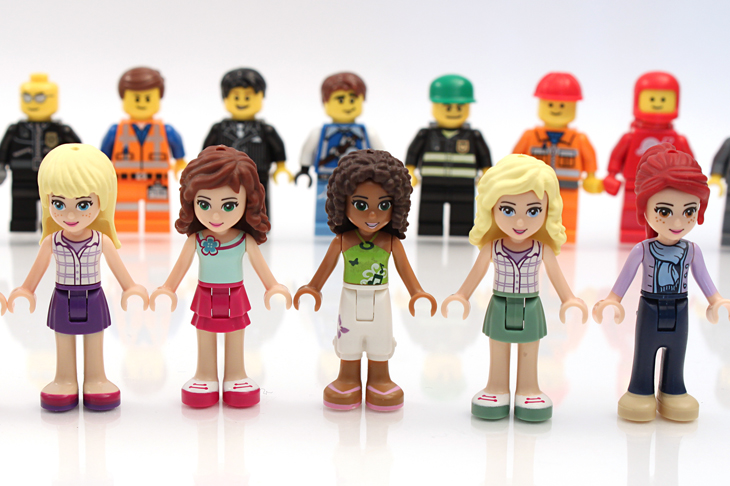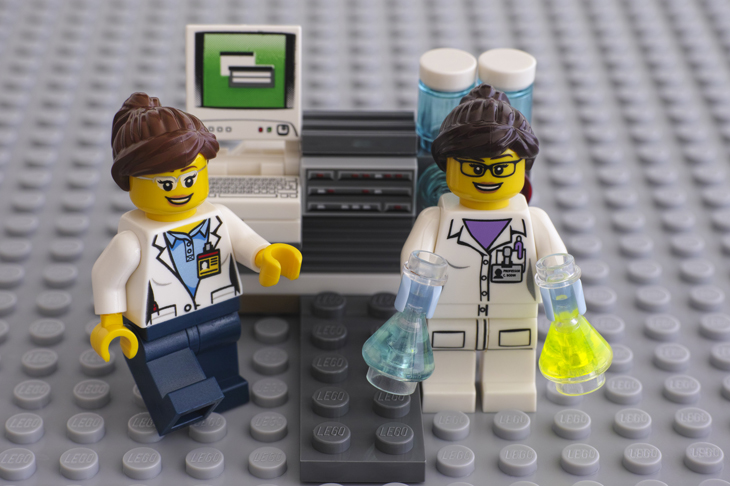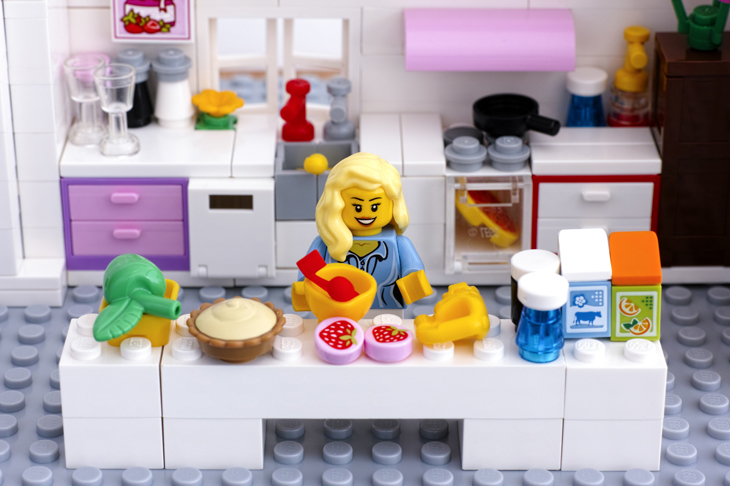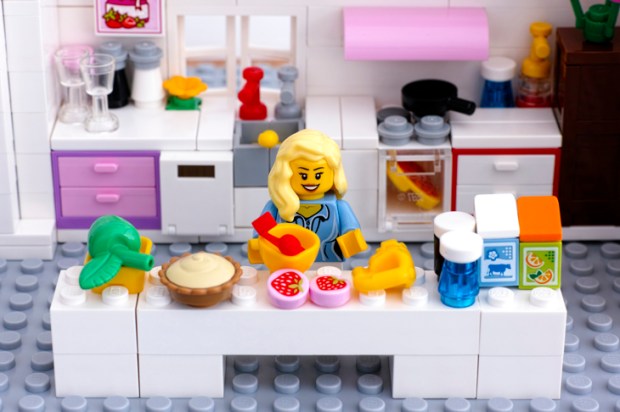There aren’t many toy companies that could make headlines in the business press merely by expanding their London offices — ‘Lego blocks out Brexit concerns’ — but Lego is not like other toy companies. Last week it was named the world’s most powerful brand by the consultancy Brand Finance; this week the second Lego movie is opening in cinemas; the University of Cambridge will shortly be appointing its first Lego professor of play.
For a company that, a decade ago, was losing $1 million a day, this is a remarkable reconstruction. But Lego has spent those ten years regaining ‘belief in the brick’, according to its new British chief executive, Bali Padda: moving away from the instant gratification of computer-game-influenced, dumbed-down sets where most of the assembly work was done before the box was opened, and back to the basic bricks that are the reason Lego is loved by children. And, just as much, by parents.
Apart from the fact that these are toys that we all played with (and current sets are still compatible with the ones we used), they seem more wholesome than other toys. One of Lego’s senior directors refers to them — in a phrase which they’re not quite brave enough to use as an advertising slogan — as ‘toys with vitamins in’. They develop motor skills and patience. They teach children to follow a plan, or, more importantly, to not follow a plan. They allow children to be creative without paint on furniture or glitter up nostrils. There’s no more room on the fridge, but throwing a painting away seems heartless; a Lego house can be admired, safe in the knowledge that it will soon be cannibalised to make a fire station.

Girls v boys: Lego Friends girls and ‘regular’ boys minifigures
Even Lego’s efficacy as a caltrop (a word which, since mechanised cavalry made military caltrops obsolete, seems now to be used only in relation to Lego bricks and British three-pin plugs) is actually a point in its favour: there aren’t many toys that have come out the better of an encounter with my foot. Besides which, Lego have recently developed an extra-padded slipper to protect adult feet from stray bricks — of course they have.
But Lego is not immune to controversy. When the research it undertook as part of its back-to-bricks reinvention showed that over 90 per cent of its products worldwide were bought for boys, it decided to introduce products that appealed to girls. The first was Lego Friends, with bricks in pinks and pastels and figures moulded to look like women rather than the block-like yellow man with his block-like haircut. ‘Let’s be honest,’ Lego’s Mads Nipper said, ‘Girls hate him.’ And girls did seem to respond to figures that did not resemble Michael Fabricant with jaundice: after six months, sales were up 24 per cent.
At the same time, the backlash started: pink Lego was ‘ghettoising’ girls, telling them that real Lego was not for them; comparisons were made between today’s gendered branding and advertisements from the 1970s showing cheeky tomboyish girls building exciting constructions from bricks in primary colours. If Lego wanted to get girls interested again, it was argued, they should make more female figures engaged in construction work or interplanetary travel rather than in the salons and swimming pools of Lego Friends. To be fair, Lego was doing this as well: its Research Institute kit, introduced in 2014, features a female chemist, astronomer and palaeontologist, and has been enthusiastically adopted by real female scientists. (One of my favourite Twitter accounts, @-legoacademics, features nothing but inspiring pictures of these figures doing the exciting work of an academic — mainly making funding applications and listening to undergraduates’ personal problems.)

Scientists at work
It is not surprising that female scientists are keen for girls to play with Lego. Studies have shown that they can build cognitive skills as well as caltrops, and that the gender gap in spatial skills, for example, is virtually eliminated if girls play with Lego (and similar toys) as much as boys do. The fact that items like Lego came to be considered ‘boys’ toys’ is one reasons why young women are not making the impact they should in science and technology, which rely on these skills.
As such, the campaign against pink Lego was the worst form of counterproductive virtue-signalling: demanding what sounds like equality at the expense of actually improving women’s life chances. In an ideal world, girls and boys would play equally with Lego in nice primary colours; but what do you do if your daughter comes home from nursery saying she has decided that she can’t play with Lego because it’s a boy’s toy? Do you say, ‘Here’s a copy of Cordelia Fine’s Delusions of Gender — I’d like you to read it, paying particular attention to her remarks on neuroplasticity’? Or do you say, ‘Look! This Lego is pink!’?
As Lise Eliot, an assistant professor of neuroscience at Chicago’s Rosalind Franklin University, puts it, ‘If it takes colour-coding or ponies and hairdressers to get girls playing with Lego, I’ll put up with it, at least for now, because it’s just so good for little girls’ brains.’ Lego is a toy we want our children to love. And that’s why many middle-class parents, despite insisting that their children should only watch CBeebies so they are not exposed to commercials, will willingly take them to the Lego movie.
Got something to add? Join the discussion and comment below.
Get 10 issues for just $10
Subscribe to The Spectator Australia today for the next 10 magazine issues, plus full online access, for just $10.
You might disagree with half of it, but you’ll enjoy reading all of it. Try your first month for free, then just $2 a week for the remainder of your first year.













Comments
Don't miss out
Join the conversation with other Spectator Australia readers. Subscribe to leave a comment.
SUBSCRIBEAlready a subscriber? Log in